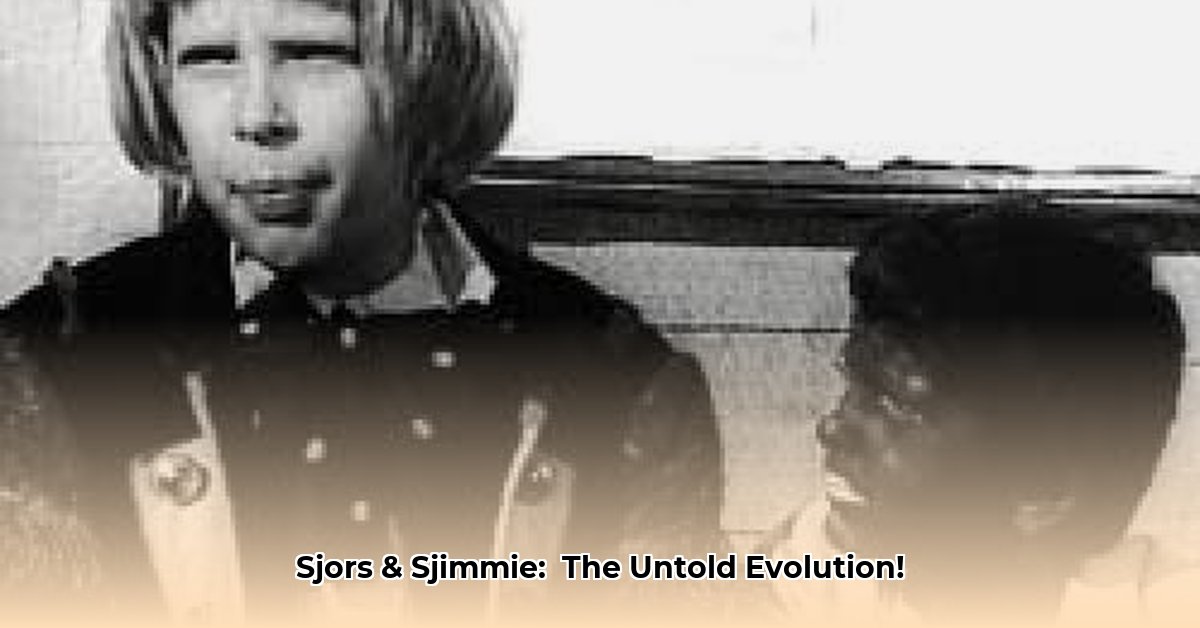
From American Roots to Dutch Icon: The Story of Sjors en Sjimmie
Sjors en Sjimmie, a cornerstone of Dutch popular culture, boasts a history as rich and complex as the adventures of its eponymous characters. This isn't just a comic strip; it's a living testament to the evolving cultural landscape of the Netherlands, reflecting both its admiration for American influences and its unique national identity. This journey, however, is not without its complexities, particularly concerning its representation of race throughout its decades-long run.
American Inspiration, Dutch Flavour
Frans Piët, the creative mind behind Sjors en Sjimmie, drew inspiration from American comic strips like "Buster Brown" and "Perry Winkle." The early artwork and storylines undeniably reflect this transatlantic influence. But Piët didn't simply replicate; he adapted and infused the comic with a distinctly Dutch flavour. The characters, their settings, and even the humour became intrinsically linked to Dutch life, values, and social dynamics, creating a unique hybrid. Think of it like a masterful fusion dish – American ingredients, expertly prepared with a wholly Dutch culinary flair.
Sjimmie's Evolution: A Reflection of Changing Times
Sjimmie, Sjors's inseparable companion, presents a particularly compelling aspect of the comic's evolution. His portrayal as a Black character offers a fascinating, albeit sometimes uncomfortable, lens through which to view changing societal attitudes towards race in the Netherlands. Early depictions, unfortunately, relied upon racial stereotypes prevalent at the time. However, as societal understanding of racial representation evolved, so too did Sjimmie's portrayal. Later artists moved away from these harmful tropes, crafting a more nuanced and respectful representation. This shift mirrors the broader societal progress in tackling prejudice and promoting inclusivity. How successfully did the comic manage to reflect and even shape these changing societal attitudes? It's a question requiring careful analysis and ongoing discussion.
Navigating War and Post-War Transformations
The Second World War significantly impacted the comic's trajectory, disrupting its regular publication. The post-war era ushered in new artistic talent as artists like Jan Kruis and Robert van der Kroft took over the reins. Under their guidance, Sjors en Sjimmie underwent a visual and narrative transformation. The art style became more modern, while the storytelling adapted to favour shorter, more immediate gags over longer, episodic adventures. This evolution likely reflects the changing tastes of the readership and the broader cultural shifts of post-war society. Did audience preferences dictate this change, or was it a conscious artistic choice to modernise the comic for a new generation?
Beyond the Jokes: A Cultural Mirror
Sjors en Sjimmie's enduring popularity, spanning generations, speaks to its ability to connect with readers on multiple levels. But its significance goes beyond mere entertainment. The comic's evolving portrayal of Sjimmie provides a compelling case study for examining the representation of race in popular culture and how such representation can reflect and influence societal norms. What lessons can we draw from this history? It's a conversation that warrants continued consideration.
Ongoing Research: Uncovering the Nuances
Further in-depth research is needed to fully understand the intricate details of Sjors en Sjimmie's history. This includes a detailed analysis of original artwork and scripts across various time periods, comparing portrayals of characters, especially Sjimmie, and evaluating storytelling techniques. A comparative study with similar international comics could provide further context, examining differences and similarities in character representation. What were the creative decisions behind the portrayal of Sjimmie, and how did these decisions evolve over time? Detailed answers to these questions are critical to a complete understanding of the comic's complex social significance.
A Legacy that Continues
Sjors en Sjimmie's impact on Dutch culture remains significant. Its journey from American inspiration to national icon encapsulates major societal changes. Its evolution, particularly regarding its representation of race, offers a valuable opportunity for reflection on the complexities of cultural representation in popular media. What insights does this evolution offer for contemporary creators and the broader cultural discourse? The saga of Sjors and Sjimmie is a vibrant illustration of the power of comics to both mirror and influence the world around them. It's a story that warrants continued discussion and careful reflection.